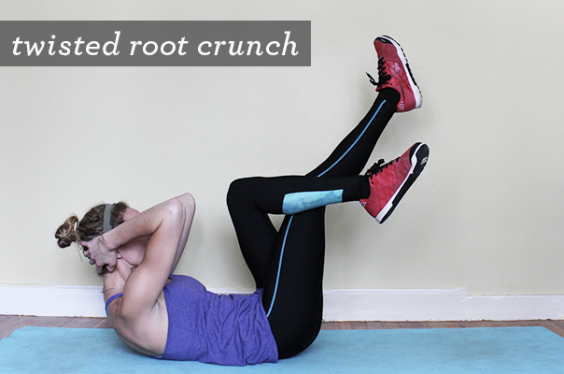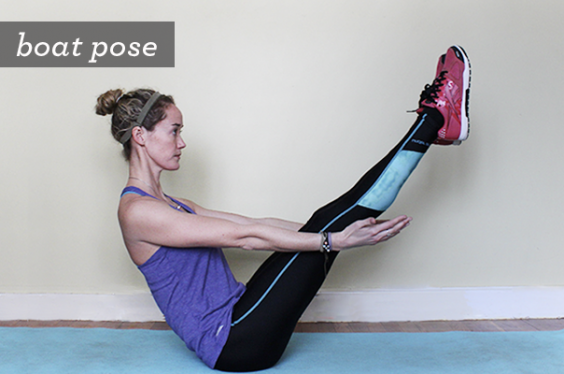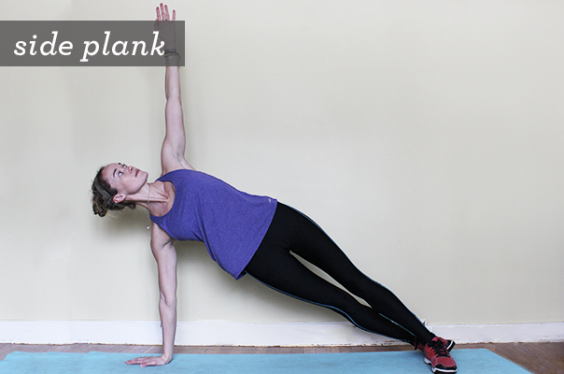Anyone who’s ever taken a yoga class knows it’s not as easy as it looks. Sure, stretching and standing around in Lululemon gear sounds pleasant, but a long Vinyasa or Ashtanga class can be seriously sweaty and physically challenging. And a strong core is essential to balancing on one leg, twisting like a pretzel, or just getting into a sturdy triangle pose. The core muscles stabilize two of the body’s most important structures — the spine and the pelvis — and help maintain flexibility throughout the torso. While certain asanas challenge the core more than others, nearly every movement in yoga requires well-developed abs and a strong back. The following five muscle groups are especially relevant for flexing, posing, and stretching:
1. The psoas is probably not the sexiest core muscle, but it’s definitely one of the most important. The psoas (try saying that five times fast!) is part of a set of muscles called the hip flexors, which keeps the lumbar spine stable and allows for hip flexion. It’s kind of a big deal — the psoas is essential for everyday activities like walking, running, bending over, or doing abdominal exercises.
2. The obliques are responsible for the serious side pain we experience after a few too many bicycle crunches. These muscles (“obliques” actually refers to four different muscles) stabilize the rib cage and spine. This interior girdle allows the body to stay strong while twisting or bending sideways.
3. The rectus abdominis is the limelight-stealing front abdominal muscle that, when well-developed, can form a “six-pack.” The long muscle begins at the pubic bone and extends up the front of the torso to the ribs. Besides making you look great in a swimsuit, the rectus abdominis keeps the internal organs safe, aids in digestion and breathing, and helps rotate the pelvis.
4. The transversus abdominis is like a crew member in a stage production: It prefers to stay behind the scenes, but it’s absolutely essential for running the show. This muscle is located behind the rectus abdominis and wraps around the waist like a belt, protecting the spine, ribs, and internal organs. Because it’s so deep within the body, the transversus abdominis is tough to engage — instructors commonly describe activating this muscle as “touching the belly button to the spine.”
5. The spinalis, longissimus, and iliocostalis muscles are known collectively as the erector spinae. And, like a 90s boy band, theerector spinae is better together than apart (sorry, Nick Carter). This group of important muscles surrounds the spine, allowing the vertebrae to bend, stretch, twist, and extend.
Keep in mind, though, pursuing “beach body” six-pack abs may not be the best way to strengthen the body for yoga practice. In fact, spot training any muscle isn’t necessarily the best way to train, since isolating one part of the body can result in imbalanced muscles. In the same way, too many crunches can detract from yoga practice by compromising flexibility and good posture. Instead of crunching ‘till you “feel the burn,” try working on abdominal strength andflexibility at the same time. Greatist Expert and yoga instructor Steven Cheng recommends practicing the following yoga-inspired core exercises to prepare for any practice.
1. Cat-Cow
Sticking out your booty might feel embarrassing, but this easy move is perfect for warming up the back muscles, shoulders, and core.
Get on all fours with the back flat and gaze towards the floor. Line up your hands underneath the shoulders and knees under the hips. Exhale, tucking the tailbone and rounding the spine towards the ceiling, and release the neck. Then inhale, lifting the shoulders and seat bones towards the ceiling and raising the head to look straight ahead. Repeat slowly and gently as many times as needed to warm up the spine and core.
2. Boat Pose
This classic Pilates move really challenges the rectus abdominis muscles. If a “full boat” is too tough, try a variation with bent knees or using the arms to help support the upper body.
From a seated position, lean back gently to balance between the seat bones and the tailbone. Keep the upper body tall and strong (it helps to visualize the torso as lengthening with every breath). Exhale and slowly raise the legs so that they’re at a 45-degree angle with the ground. Legs should be zipped together and straight, although bending the knees makes this pose easier for beginners. Hold for 15-30 seconds, then rest and repeat.
3. Side Plank
No yoga routine would be complete without this classic abdominal exercise. Engage the transversus abdominis and obliques by pulling the belly button towards the navel and raising the hips high.
From a regular plank, rotate the body to the left so the body is resting on the outside edge of the right foot and the right hand. Extend the left arm perpendicular to the body (so it forms a “T”), and focus on extending the body in one straight line from the crown of the head through the feet. Hold for 15 to 30 seconds, and then switch sides and repeat.
4. Basic Crunch
While it’s true that too many crunches can tighten the rectus abdominis and reduce flexibility, this classic fitness move still has its benefits. Make sure to prevent neck strain by supporting the head and neck carefully with the hands.
Lie back with legs bent at the knee and feet in the air (“tabletop” position). Place the palms on the back of the head with the elbows pointing outwards. Inhale, bringing the sternum towards the knees. At the same time, lift the tailbone, bringing the knees towards the head. Exhale and release. Repeat 10-15 times.
5. Twisted Root Crunches
These complicated crunches get a bit deeper than the basic exercise listed above. By engaging the upper body and the lower body, it’s possible to work upper and lower abdominals (and inner and outer muscles) at the same time.

Lie back with knees bent and feet on the floor. Wrap the left leg over the right leg and (if possible) tuck the left foot under the right calf. If wrapping one leg around the other twice isn’t feasible, just wrap once and let the left foot dangle. Inhale and bring the hands behind the head to support the neck. Exhale and bring the elbows towards the ceiling. Inhale deep into the core. Exhale, bringing the knees straight up and raising the elbows towards the ceiling. Inhale and bring the legs, head, and chest back to the starting position. Repeat as 10-15 times.




